In this guide, YesPlz will walk you through the essential pieces of fashion tagging, from what it is to the effect on shopper experience—and more.
by YesPlz.AIFebruary 2025

How would you describe the above product types, color, and neckline?
The term “fashion tagging” often evokes visceral reactions from tired eCommerce managers, overwhelmed by the sheer number of product attributes to tag, frustrated by inaccurate technology, and impatient with the number of hours it can take for tagging, whether it’s manual or automated.
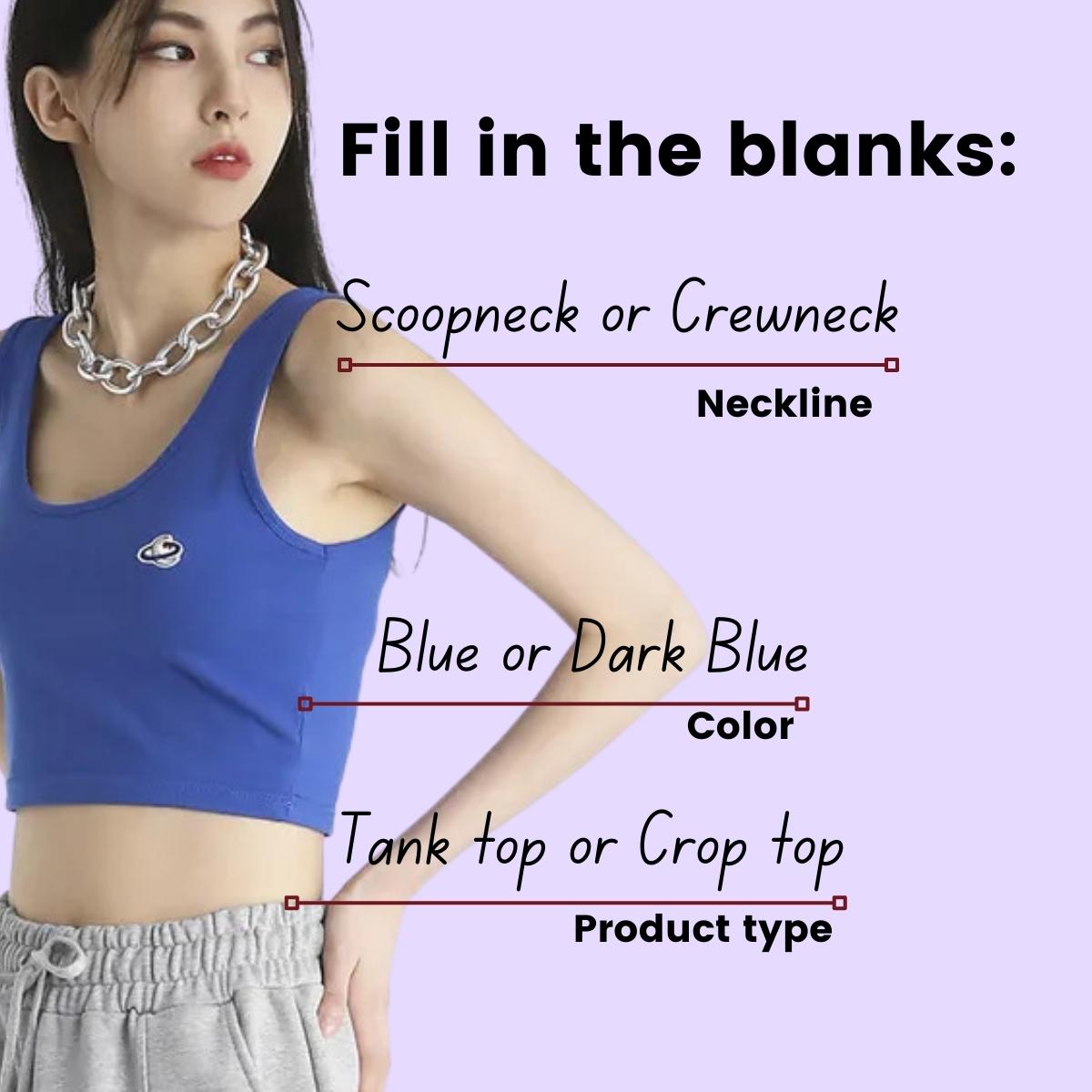
Fashion tagging doesn’t need to be your eCommerce’s Achille’s heel—in fact, it can open the doors to all types of personalization experiences. With a clear understanding of what it is, and the difference between tagging solutions, you’ll be better equipped to find the best tagging solution—without frustration, impatience, or feeling overwhelmed.
In this guide, YesPlz will walk you through the essential pieces of fashion tagging (aka AI image tagging), from what it is to the effect on shopper experience—and more. Bookmark this guide for later, as we continue to update with the latest news and information.
Fashion tagging (or AI image tagging) is the process of labeling product attributes, either automated or manually. A single white t-shirt can have between 20 to 60 different product attributes, including fit, style, color, length, or even occasion (more on that later). While it may be manageable to manually label these product attributes at first, the sheer number and volume of inventory makes this unsustainable in the long-term.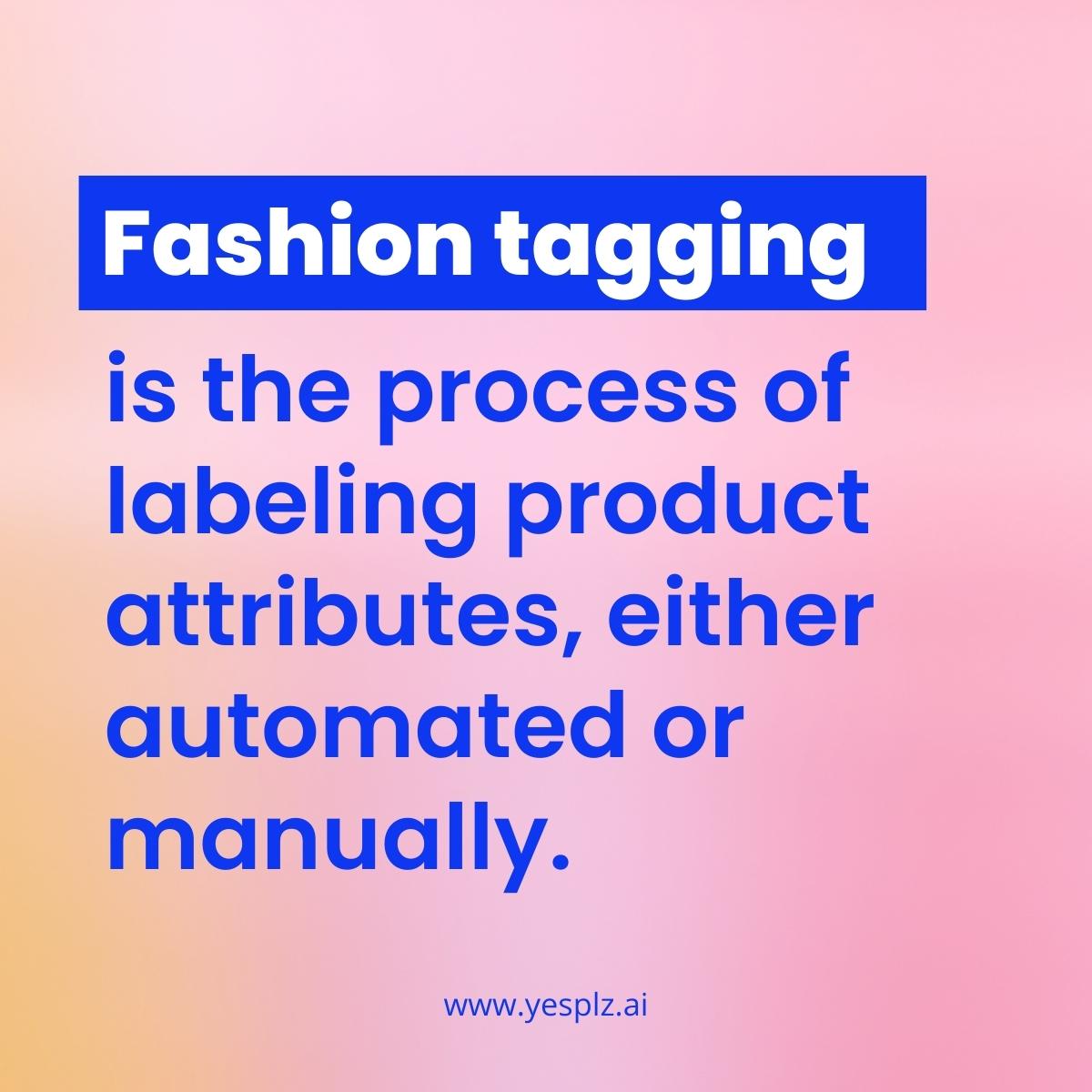
And, humans are (inevitably) error-prone. Even the most meticulous of product taggers might fumble, mistaking a scoop neck for a crew neck. In addition to errors, complex taxonomies result in each of us giving different terms for products—a pair of “kitten heels” to one person could be a “low heels” to another. Then, add in the question of subjectivity: a “work” dress could also be a “daytime” dress, depending on the person tagging.
Third-party product information, from vendors, is also riddled with inconsistencies and inaccurate tags—depending on their own definitions of terms.
Manual product tagging struggles to keep up with taxonomy, human error, and the high volume of products, leading to disorganized product catalogs for retailers. For shoppers, this means poor search results, resulting in missed conversions and low shopper satisfaction.
Product tagging’s biggest challenge is remaining accurate across large numbers of products.
The alternative to manual tagging is automated tagging (aka technology-enabled). However, each automated tagging tool doesn’t necessariy have the same AI behind it.
When we discuss “product tagging,” we’re talking about:
Computer vision: A type of AI that mirrors the complex way humans visually identify and process information. It’s the driving force behind AI-powered fashion tagging because it can analyze and interpret images.
Natural Language Processing (NLP): A branch of AI that focuses on creating ways for computer to understand text and speech, just as humans can. NLP is helpful for interpreting text information from products.
An ideal AI image tagging solution can identify product attributes in:
-all types of image quality
-in user-generated content and professional photos
-in photos with and without human models
-text information, like product titles and metadata
But, as many technology critics may point out: AI can fall short in achieving perfection in product tagging. And, that’s true: technology can only help to a point.
That’s where humans come in: artificial intelligence will inevitably draw wrong inferences—and it’s OK. Because, ideally, fashion-trained experts will be there to correct and train the AI.
At YesPlz AI, we have it all: fashion tagging that includes computer vision, NLP, and real, human experts—creating the perfect product tagging solution for your eCommerce.
A common objection among eCommerce merchandising teams is that fashion tagging solutions can take too long—so they still prefer to manually tag, knowing that some of the results will be inaccurate.
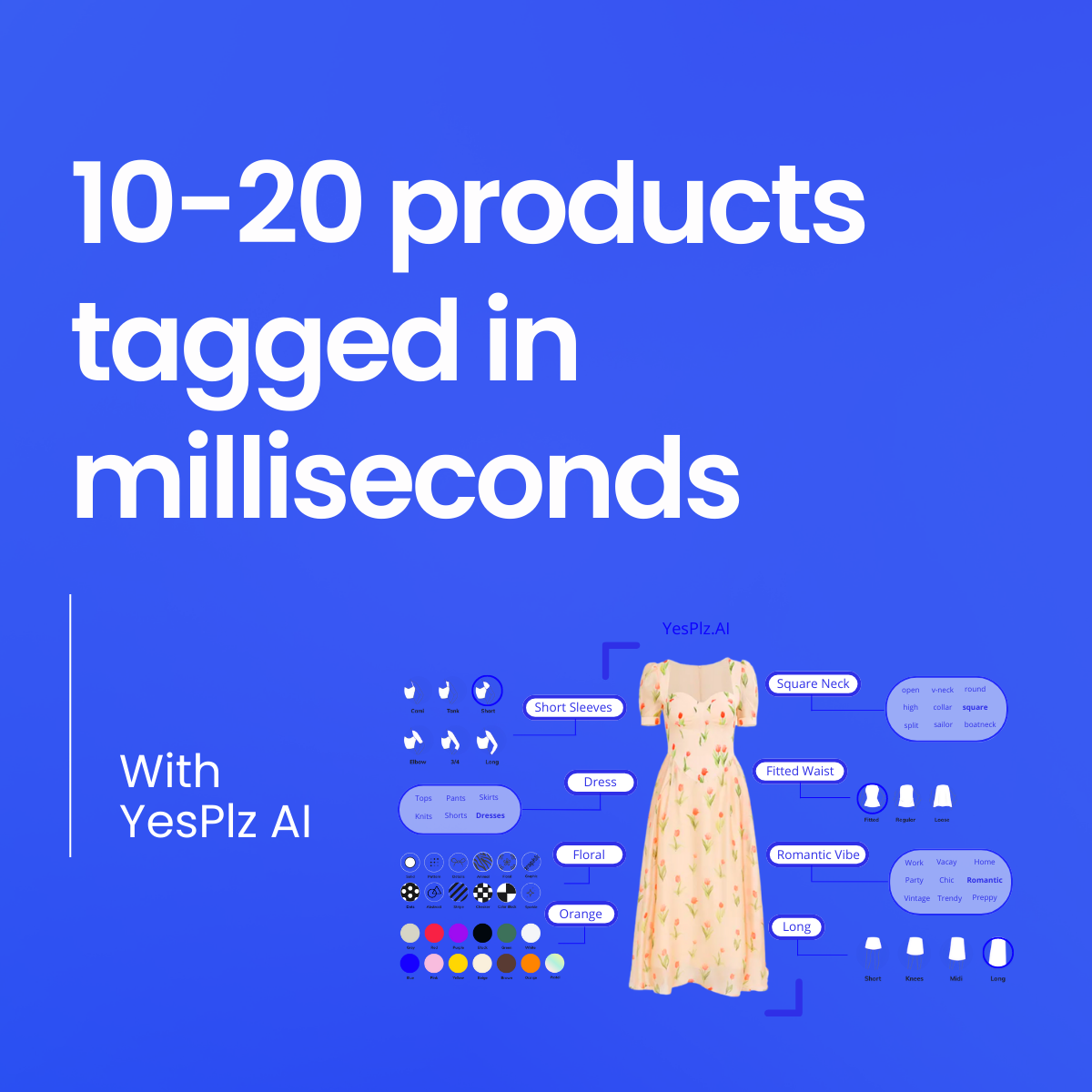
When choosing a solution, make sure to ask about speed—technologies such as YesPlz AI can tag 10 to 20 product attributes in milli-seconds.
Any seasoned shopper can name the problems plaguing search and discovery:
1- Search is inaccurate—especially when using terms that may have different definitions
2- It can feel impersonal— shoppers have specific preferences for fit and style, which retailers struggle to implement.
3- Recommendations are unrelatable— most recommendations are still missing that magic “a-ha” moment where the recommendation fits the style, vibe, and most important product attributes
But, why is fashion search still riddled with problems in 2023?
The answer: poor AI image tagging
When key product specifications are missing, due to poor product tagging, shoppers see mixed, inconsistent search results. A search for a “shirtdress” might include search results such as shirts, dresses, and shirtdresses.
The other unavoidable problem with modern search is ever-changing taxonomies—the newest TikTok trend can result in new trending terms, but it’s difficult to manually re-tag products to incorporate new terminology.
With automated, AI-powered fashion tagging, product tags can be automatically updated to include new terms, leading to better search filters.
And, those magic product recommendations? The foundation of great product recommendations is accurately tagged product data.
Accurate search results, recommendations that “wow” shoppers, and personalized shopping experiences are all built from accurate product data. Although fashion image tagging is “behind the scenes,” your customers are affected by its quality every time they search.
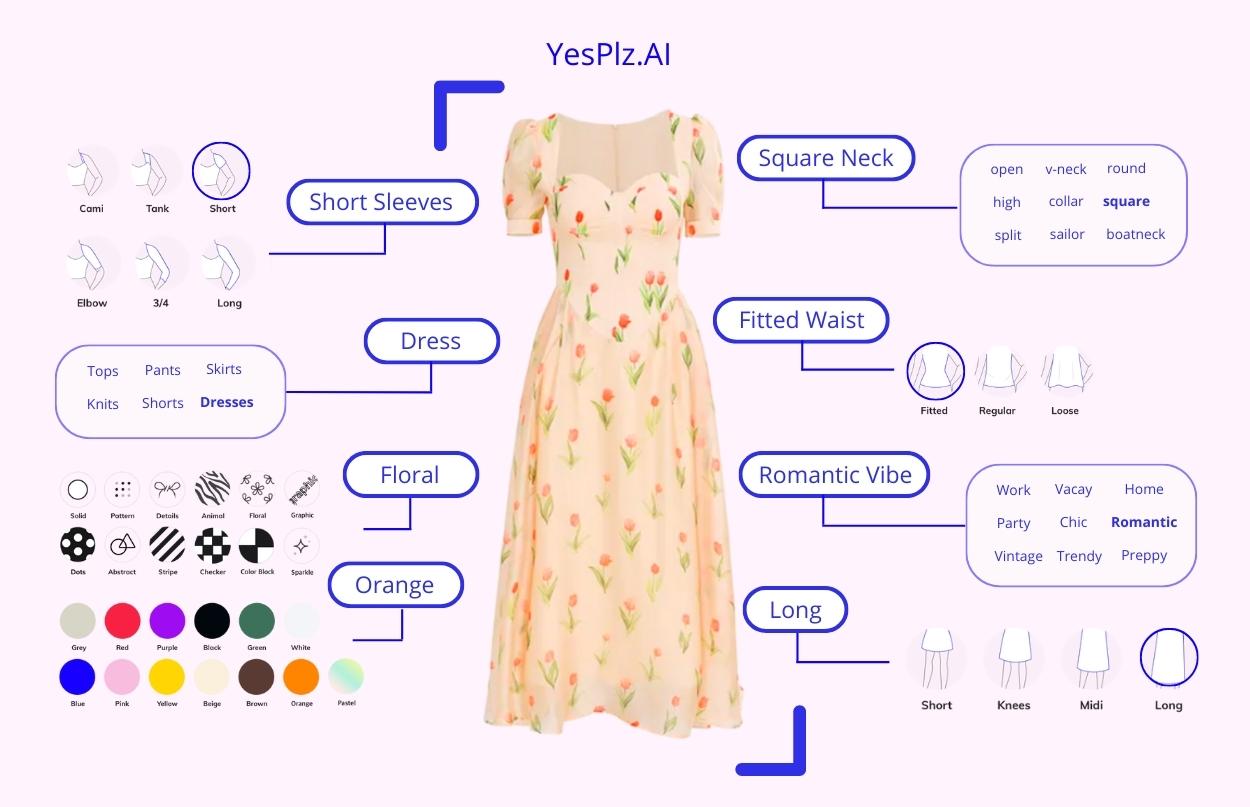
Every fashion tagging solution has a different set of ingredients.
Here’s what makes YesPlz’s image tagging solution so unique:
Step 1: Before building, we defined the key attributes that shoppers care about through user interviews
Step 2: We train the AI using image and text
Step 3: Experts in fashion correct the AI’s mistakes
Step 4: We provide data enrichment and image tagging output for retailers
Bonus: YesPlz relentlessly explores a creative way to tag information users care about, using various tools for top-tier fashion tagging.
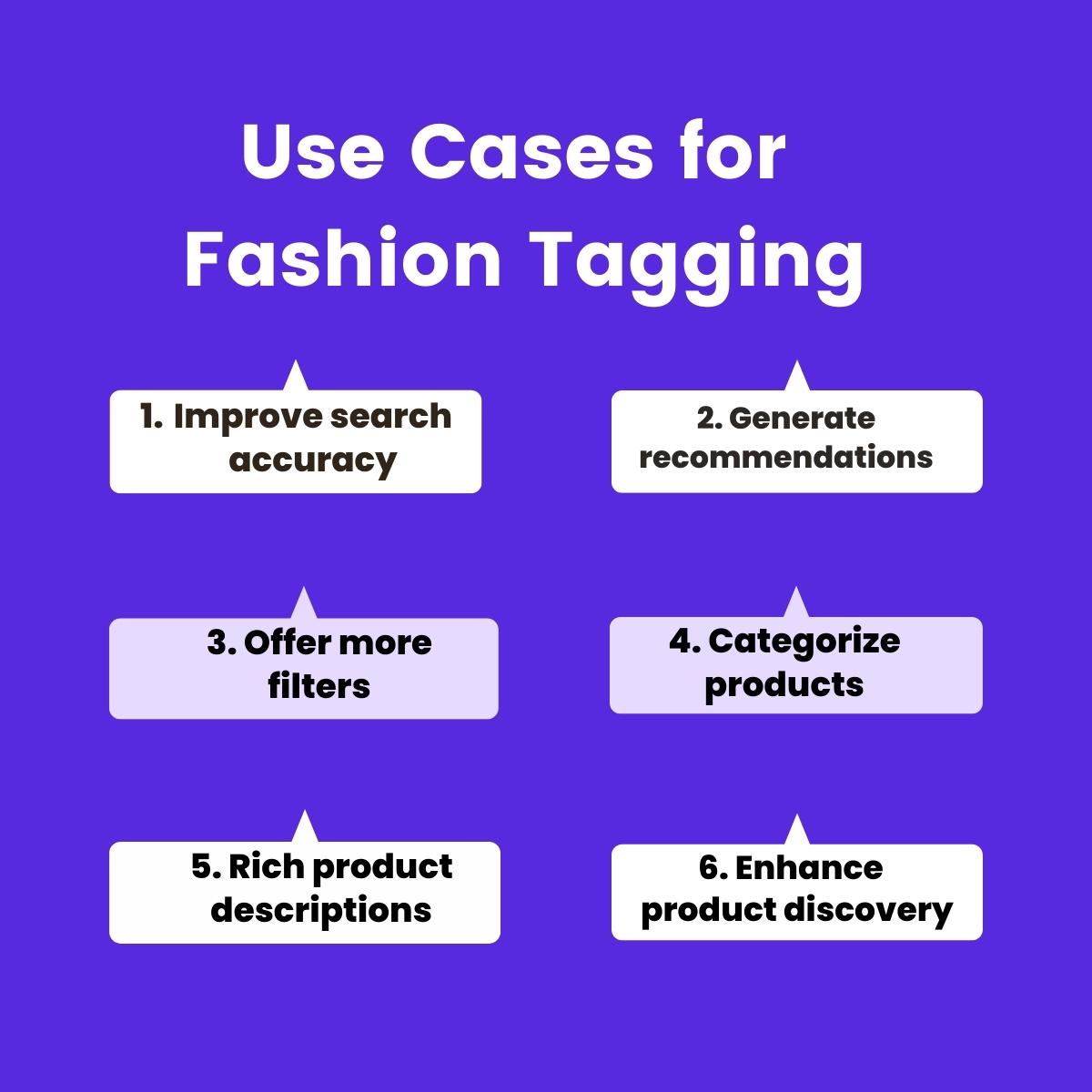
AI image tagging creates the building blocks for:
1- efficiently categorizing products
2- creating rich product descriptions
3- improving search result accuracy
4- offering more filtering options
5- generating powerful recommendations
And, by automating fashion tagging, efficiency increases and valuable time is saved.
But, most importantly, product tagging is the key ingredient in understanding shoppers’ needs, as well as enhancing the quality of product discovery. It’s used to create search, filtering, recommendations, and hyper-accurate personalization.
Check out our blog on search and recommendations to learn even more use cases and examples.
Based on YesPlz research, shoppers love occasion filters—but they want to see more of them! If retailers know that customers want to see thematic filters—why aren’t they more common? And, why are the existing thematic filters inaccurate?
There are two reasons why thematic filters aren’t common (and are inaccurate):
1- Subjective definitions of different occasions
2- Technology that isn’t trained to recognize mood/vibe
1- Subjective definitions of occasions: Every shopper has different definitions for certain occasions—and when retailers only use definitions from 1 or 2 merchandisers, we see inaccurate occasion search results. For example–how would you define a work dress? What are the product attributes of a daytime dress?
The solution: Crowdsource definitions of occasions with crowd training and user interviews to validate filters.
At YesPlz, we eliminated the problem of subjectivity by asking large groups of shoppers how they would define different occasions—and use this information to train our artificial intelligence.
But…what if there was an even more interactive way to eliminate the problem of subjectivity and learn the preferences of shoppers?
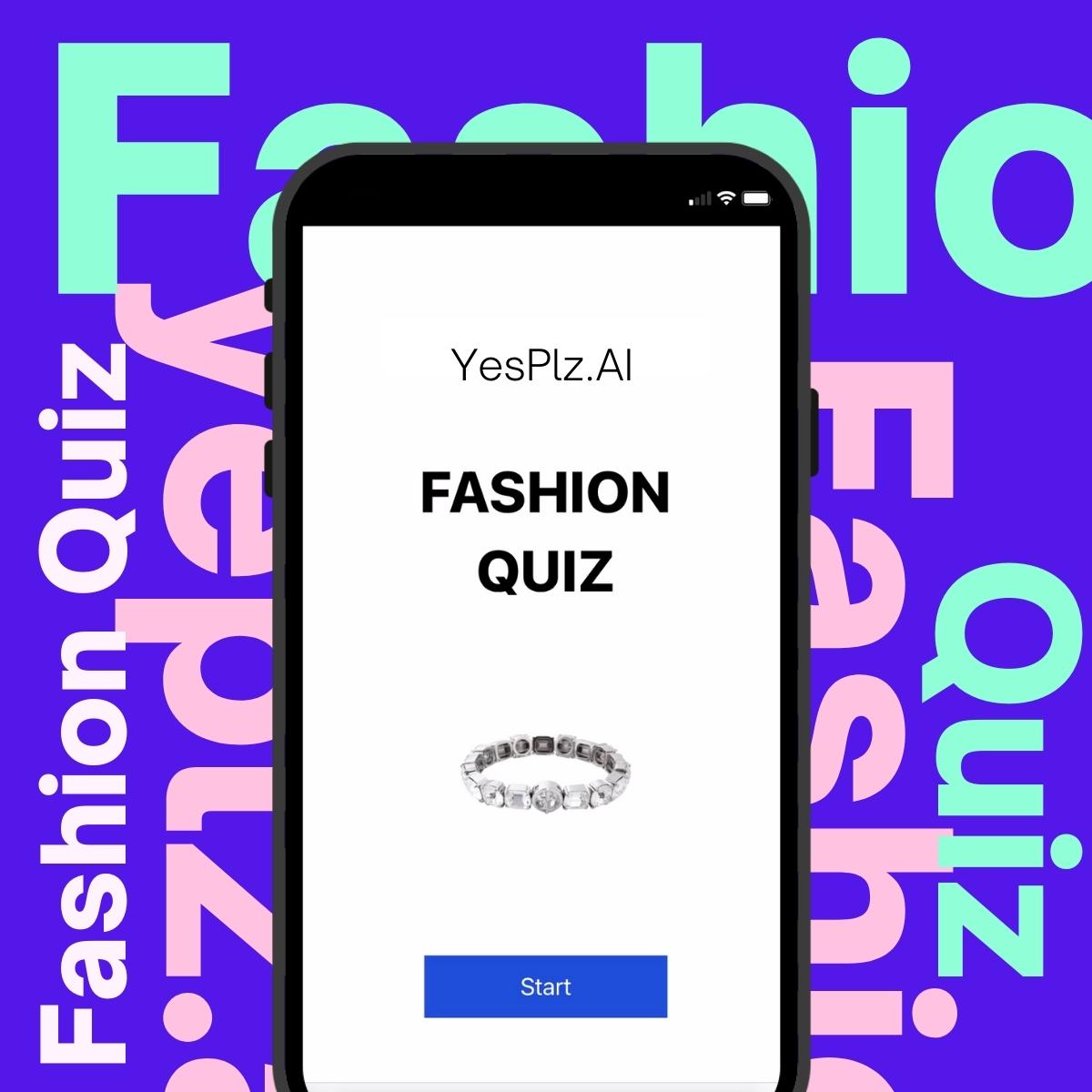
The YesPlz fashion quiz asks shoppers their preferences–which is then used to train fashion AI and create search filters that shoppers want to see.
2- Technology that isn’t trained to recognize mood/vibe: Not all tagging tools can accurately recognize mood/vibe. This requires rigorously training until the AI can fully understand the vibe from both product images and text.
The solution: A hybrid approach, that combines crowd and technology training, as well as fashion AI creates successful occasion, mood, and vibe filters.

Inside this ebook, you’ll find:
Sample Tagging List: Real examples showing how products are tagged for better search and filtering.
Key Attributes List: A detailed breakdown of fashion attributes YesPlz AI can tag across apparel, accessories, and footwear.
Dashboard Overview: A look at the intuitive YesPlz tagging dashboard that helps you manage, edit, and visualize tags at scale.
Tagging Process: Simplified explanation of how fashion tagging works—from AI model training to integration with your online store.Details about the fashion tagging process
In a competitive landscape, fashion tagging is a powerful tool that can open the door for other types of personalization. As the foundation for search and recommendations, it’s vital for your eCommerce to choose a solution that is accurate, efficient, and up-to-date on the latest fashion trends.
Fashion tagging doesn't need to be complicated or expensive.

Written by YesPlz.AI
We build the next gen visual search & recommendation for online fashion retailers
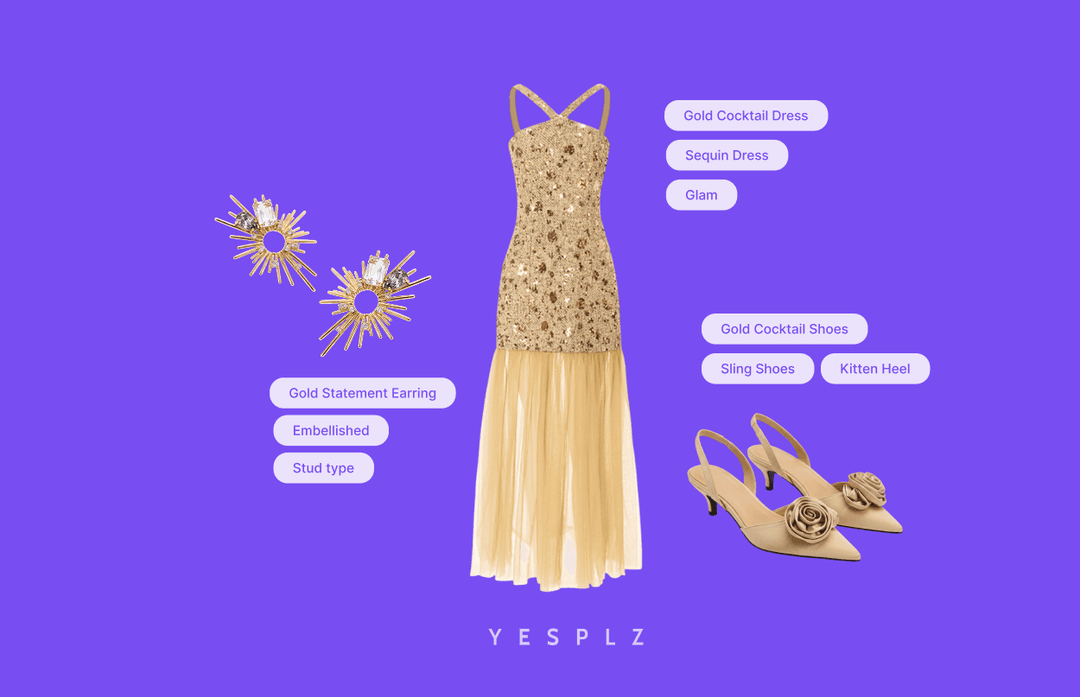
What are product tags used for? It’s a solution to low search CTR, limited filtering, manual collection curations, and more. Discover 6 essential use cases of product tags to transform search, filtering, SEO, and collections to boost sales.
by YesPlz.AI
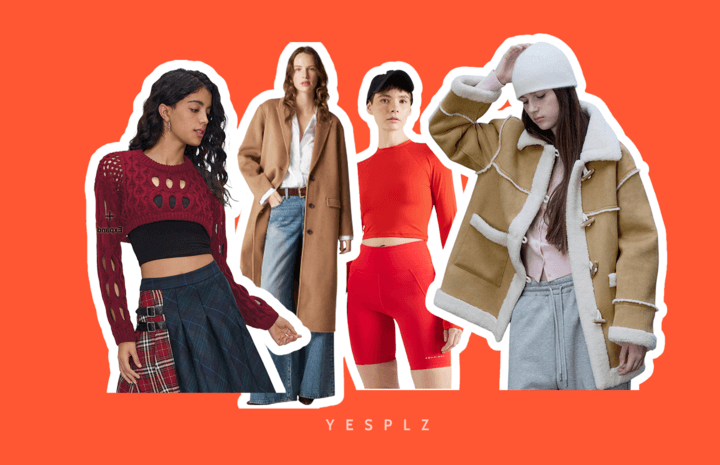
Discover 4 proven fashion recommendation strategies that boost conversions. Learn how About You, J.Crew, W Concept, and Cider drive sales.
by YesPlz.AI